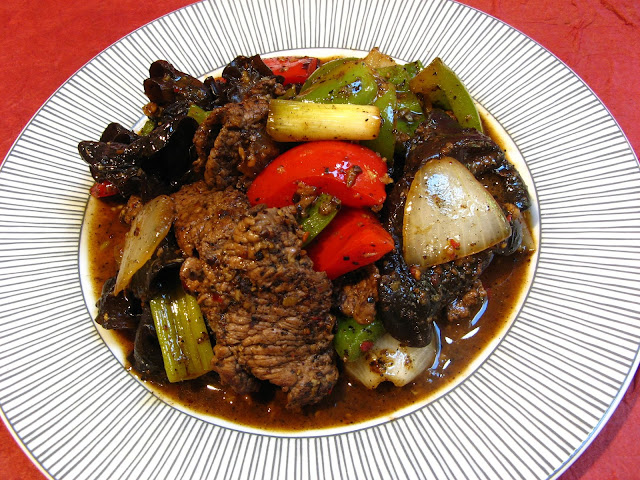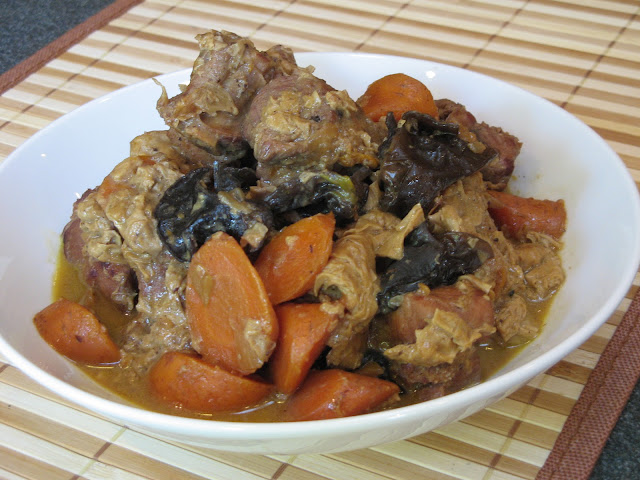Chicken and rice cooked in a clay
pot is classic Cantonese dish. This version adds mini-shiitake mushrooms, dried
lily flowers, dried black fungus strips, and dried scallops. Mini-Shiitake
mushrooms (my nomenclature) are very small Shiitake mushrooms that are
occasionally available at my local Chinese herb and dried foods store. Since
they are hard to find, a good substitute is to use diced regular sized Shiitake
mushrooms. The one caution when making this dish is that any excess liquid
marinade from the chicken will burn in the clay pot when the rice is cooked, so
the chicken needs to be separated from the marinade before adding to the clay
pot. The same caution also goes for the oyster sauce, which is only added at
the end of cooking.
Using a clay pot to make rice is
very similar to making rice in a pot. A crust is produced on the bottom of the
clay pot, similar to cooking rice in a pot, and you don’t have to reboil to
release the scorched rice from the bottom. The taste of the rice is very
similar to making rice in a pot. The sequence of cooking the rice in a clay pot
is:
- Pre-heat the clay pot over medium heat for 5 minutes to prevent shocking the clay pot and possible breaking it.
- Bring the clay pot rice to a boil over medium-high heat for 10 minutes.
- Simmer the rice for 15 minutes over low heat.
- Scorch the rice using medium-high heat for 10 minutes.
- Turn off the heat and allow the clay pot to sit for 10 minutes to release the scorched rice from the bottom.
- Serve the rice.
Given that there are many variables when cooking rice in a
clay pot, the cooked rice will vary from every time you cook it. If more water
is used, the rice will take longer to cook. If too little water is used, the
rice becomes more al dente and the volume decreases because the rice doesn’t
get fluffy. Burner heat will determine how quickly the rice cooks and how
scorched the rice will get. You just have to experiment and watch for the
indications that signal when the rice is cooked to your personal preference.
Making rice in a clay pot seems like a simple task, but you’ll find that it
takes practice to get consistent results.
Enjoy!


















